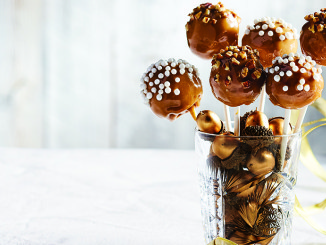
As fall rolls around every year, I can’t help but think about apples. Nothing compares to a crisp, just-picked apple — except for maybe a warm, just-out-of-the-oven apple pie! That flaky, buttery crust and those perfectly cooked cinnamon scented apples … an apple pie is just so good.
While I don’t think the pie needs any improvement, if you’re anything like me, you still look for ways to perhaps use more whole grains or less added sugar. Because of that, I’ve come up with a few tips on how you can nutrify that apple pie!
Nutrifying is about making small changes to your favorite foods to make them a little more nutritious. You likely do this already — remember when you swapped in that Greek yogurt for sour cream? That’s nutrifying! And good news — this isn’t about food shaming or sacrificing flavor. No way. I love food, all of it. Instead, nutrifying is about celebrating the food in a new way, one that honors its flavor and natural goodness!
Now, back to that apple pie. Should you choose to nutrify it, let me break down the process, step-by-step.
Step 1: The Crust
This part of the recipe can make or break any pie. A bad crust equals a bad pie. And if you ask me, homemade is always better than store-bought. And it doesn’t have to be hard. You just have to read the instructions and practice some kitchen confidence.
While some may balk at the idea of a whole-grain crust, I think it’s perfect. There’s some heft to whole-wheat flour that pairs wonderfully with fall-inspired pies. But there is a limit to the amount of whole-grain flour you want to use, because while that heft is nice, it’s only nice to an extent — too much makes pie dough feel heavy and tough. So you’ll need to balance it with a little all-purpose flour. I found that a 50:50 ratio of all-purpose and white whole-wheat flours works best.
As for the butter or shortening, I don’t mess too much with that. You need that fat to keep your dough flaky.
Step 2: The Sugar
Do you ever find that pies are cloyingly sweet? Me too! I want to taste the apples in my pie and not feel like I just ate a spoonful of sugar. My recommendation is to reduce the amount of sugar in the recipe by a third or even half, especially if you’re using already perfectly sweet apples. I then like to make sure I’ve got a nice blend of spices to accent those apples — cinnamon, nutmeg and cloves are the perfect way to boost flavor and also lend a natural sweetness to the pie.
Step 3: The Apples
Don’t skimp on the apples! I always say that you should have a heaping pile of apple slices in that pie crust, or it’s just not worth it. Buy one or two extra apples and add them to the mix if it appears your pie isn’t “full.” As for those apple skins, I leave them on. I can hear some of you gasping now, but why not? We all know they’re loaded with nutrition and why waste perfectly good food.
Step 4: The Cut
Finally, you’ve baked your pie and it’s ready to slice. But before you cut it in the traditional eight slices, consider making them smaller. I go with 12 slices and find that’s just the right amount!
Now it’s your turn! Why not take some of those great apples you just picked from the orchard and turn them into apple pie?  While you’re at it, try these nutrifying steps for a fun twist!
While you’re at it, try these nutrifying steps for a fun twist!








